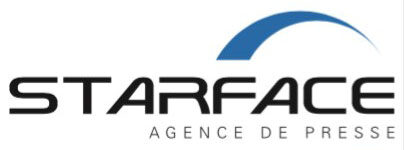![]()

The days of traditional news agencies are gone, this is the era of stock photos online and based on an economic model comparable to that of Airlines: offshoring, removal of social benefits and cut throat competition.
“The disappearance of photo agencies and photo editors” is, for Jean-François Leroy, the most striking phenomenon of the past two decades.
Until very recently, during the last century, photojournalism was practiced through news agencies and magazines whose editorial staff often got together, in the evenings, in the smoky bars of the red light districts.
Alain Dupuis, a Sygma salesman, recounts ‘40 years of Photo Sales’ in this week’s “La Lettre”, but, during this interview, he recalls the terrace “fiestas” on the Champs-Elysees and in other locations and on other occasions when “we had the idea for a story” …
If I mention the atmosphere, it is to better explain to young readers that the editors were completely taken by surprise by the arrival of IT departments and the shareholders in newspaper groups. Their motto? Everyone behind their screen and the information will be better controlled and more profitable!
Read moin La lettre de la photographie
The individualism network against collective intelligence
“About twenty years ago …” writes David Servan-Schreiber in his latest book “We can say our goodbyes several times” (Ed Robert Laffont, June 2011) »I was struck by the fact that the fascinating and vast network of connections that we call the brain is made up of cells which, taken individually, are not very “intelligent”, nor very “capable”. But as soon as they interact with each other, they give rise to the most brilliant mental faculties, such as perception, intelligence, creativity, memory, etc..
That is by far the best definition of an editorial staff that I have read in a long time! And that is why, the disconnection of all these cells (photographer, writer, editor, copy editor, photo researcher, proof reader, archivist etc.) has meant that we have lost so much intelligence in how to understand the world market.
During the last century, Hubert Henrotte upset the traditional photojournalism profession by creating Gamma and then Sygma. Göksin Sipahioglu completed with his Sipa Press … At that time, these news agencies, like others in the world, were born from the gathering of men and women united by a common passion: information.
More wages, more bills !
The servers have no qualms, no demands and no trade unions. Peter Low and Martin Vorderwülbecke can take over, without paying a penny, SipaPress. www.sipa.com does not ‘protest’. On the other hand, three-quarters of the people laid off, following the “job protection program” wonder: « Why was I not laid off in Beatrice Garrette’s lay off program (note: former CEO of Sipa Press on behalf of Sud Communication) and am I included in the Heinrich Ollendiek and Mete Zinoglu program?. “ « How are they going to continue to work with only eight photographers instead of twenty-four?” they ask one another.
The answer is simple. It can be found written in full in the new “Contributor Agreement » proposed by Corbis images to photographers: « In addition, if you reside in France, you hereby represent and warrant that you are not a (photo) journalist nor a press card holder and that you do not intend on becoming a (photo) journalist nor will seek to hold a press card. In the event that you reside in France and have a press card, you are not eligible to enter into this agreement.”
Ulf Schmidt-Funke, president of Sipa Press and DDPimages (Hamburg) and the General Managers of the agency analyse things the same way as Corbis. I will summarize the essence: we are going to work with more copyright partners or independents. Some photographers already have companies, and those from Sipa Press, for example, can create companies after their dismissal. Obviously it is not longer about earning a full-time or freelance salary.
Ah the French, some will say, still sticklers about their established social benefits. This is not mistaken. The fact is that French laws protect the photographers more than other countries. It is also a fact that since 1985 the incessant attacks which have come mainly from the United States have led Europe towards the deregulation of many markets, starting with telecommunications, today’s coal and steel.
We are at the end of this process. Thanks to the Internet, companies such as, Getty Images and Corbis, followed by a string of low quality stock photo companies apply the same formula to photojournalism as the new Airlines: offshoring of staff, removal of both benefits and recourse to indirect state aid.
Indeed, to continue to work, independent photojournalists often have, as the only solution, to beg for orders from government public offices or NGOs or other charities.
We are living in the age of « low cost » photojournalism!
Michel Puech
Links
http://www.puech.info
ContributorsDernière révision le 2024/03/03 a 7:15
- « The Stringer »
« Trang Bang, j’ai toujours l’impression que c’est arrivé hier » par David Burnett - 19 décembre 2025 - « The Stringer »
L’enfer est pavé de bonnes intentions,
mais ça reste l’enfer ! - 4 décembre 2025 - Patrimoine photographique de Sygma
Un jugement hors du bon sens,
enterre un scandale ! - 28 novembre 2025








